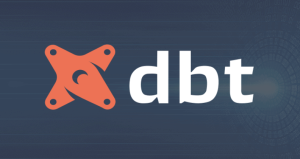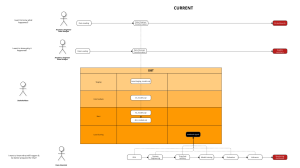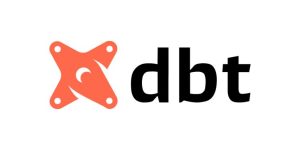Written by Alex Bratton
Most organizations today are struggling with how to advance in their use of data (see our recent article on. The good news is that it’s straightforward (and doesn’t require huge investments in tech and lots of new tech hires) to use data to grow your team’s capabilities and deliver more value to your employees. The first step is to recognize where you stand today in your journey to AI maturity. Let’s look at the five stages of the Data to AI Maturity journey.

Stage 1: Manual data processing
We consistently hear stories from sales management about their frustrations with manual data processing. Sales people are creating their own spreadsheet trackers to keep up with what their customers are doing and how their commission or bonus is shaping up based on sales performance − a data point particularly important to them. These sales people are also crunching performance numbers to share with their field sales manager.
The field managers pull data and analyze sales rep performance. Because they also need to create a picture of their entire field team’s performance, they have to run different reports (which the field sales team doesn’t have access to), aggregate the information and then create PowerPoint presentations to send ‘up’ to their regional managers.
Regional managers are doing exact same thing. They look at their various districts’ performance, manually create a data and visual summary of the entire region, and then send to national leaders. And so on… all the way up the organization. Each level looks at their own performance (for personal reasons) and then creates a document to pass ‘up’.
Since every individual is creating a unique document, this manual approach lacks consistency and results in large amounts of time wasted digging into how specific numbers were reached and verifying the accuracy, rather than understanding what the data is trying to tell us.

Stage 2: Death by dashboards
The data-sharing challenge is often addressed by flooding each individual in the chain with even more data. BI (Business Intelligence) is one of the most misused tools in the enterprise. No wonder that a death cry of employee productivity is …
“If we can just load this into BI tools that the team can manipulate and dive into as deeply as they want, everyone will have the same information!”
Unfortunately, now everyone in the organization needs to be an analyst to understand what’s going on in their world. This often encourages the creation of shadow IT and data teams (local team members creating tools to answer the many specific questions their team has, outside the overall data and IT accountability chain).
And then there is the magical ‘dashboard’. Originally conceived to provide a simplified view of what’s going on in the organization (think about the dashboard in your car with less than five data points on it), dashboards rapidly became the dumping ground for every item possible, often resembling the cockpit of the space shuttle with hundreds of dials, readouts and blinking lights. We’ve seen website dashboards that users navigate or 100+ page PowerPoints created to cover every conceivable question and scenario for a discussion. Once again, large amounts of time are wasted in creating and navigating these tools in an attempt to reach answers.
Both manual data processing and magical dashboards mask one of the core problems at this stage of maturity: multiple, inconsistent sources of truth. The same answers reside in different systems and each part of the organization looks in different places for their answers. Copies of data are spread around as it is crunched and report writers typically grab whatever is easiest to access as only key individuals typically know where and how to get to the source of truth.
This takes us right back to arguments about where the data in a report came from as the business logic applied to generate the answers isn’t readily apparent.

Stage 3: Data tells a story
As organizations evolve digitally, the data starts to tell stories to their teams. This typically starts when efforts focus on understanding what information employees in various roles actually need to do their jobs successfully. This focus simplifies the data discussion and brings business and IT into a partnership to serve those employees.
Focusing at the employee role level also uncovers that answering the most valuable questions (what is our sales performance — and why?) requires viewing and combining data from multiple systems currently being used across the organization. To prevent this from leading to yet more information overload for the team, aggregated data must be stripped down to what is specifically required to answer the questions at hand.
This simplified, role-focused approach allows the data to be turned into glanceable answers for employees, giving them everything they need on a single screen to understand what’s going on and make better decisions accordingly. And, they didn’t waste hours clicking through a myriad of reports, tools, and dashboards to surface needed data and manually mash it together.
Successfully achieving role-focused data requires close coordination between IT and the business to understand the needs of the role and deliver the right answers at the right time. For example, it is important to understand where various roles intersect (i.e. salespeople and field sales managers) and ensuring there are tools to support those interactions. These efforts directly impact the consistency of data up and down the chain and ensure that people interacting have the same information in front of them, regardless of each roles’ specific tools.

Stage 4: Intelligence emerges
As intelligence from data begins to emerge, organizations start to see real business results. The speed to produce value starts to increase as employees learn the tools, improve their understanding of the data, and grow more comfortable. As you become more sophisticated in setting alerts and exceptions, employees should feel more supported with proactive information. However, even as your data provides more relevant information, good cross-functional development teams are still crucial.
At this level of maturity, personalized customer experience can become a reality. Your data has matured enough to identify individual needs better and provide your employees with the necessary tools to raise your customer service levels. This doesn’t mean creating more call center rules and procedures; it simply means you can measure unique customers more closely and employees can react accordingly.
Counterintuitively, your teams may begin sharing more data with customers and vendor employees because your information is now more reliable. In our experience, people in your organization who never talked to customers will begin to do so and naturally want to share valuable and relevant information.
If you are indeed finding that your employees are sharing more information, make sure your data governance processes are working efficiently. For example, have workable guidelines for sharing data with customers and vendors. This includes what data to share, easily understood restrictions, and a process for how to share data.
At this stage, restrictive, traditional data access limited to a few key users (described in Stage 2) should be gone and employees should generally feel comfortable accessing data as needed. Employees free to pursue investigations within the data can derive novel solutions.
Lastly, improved business outcomes should be more tangible and measurable as your data maturity progresses. Although you may be just starting machine learning and other AI applications, your employees should already be deriving significant value from your data. The value accruing to your organization should be high — enough to even pause your Machine Learning work and simply reap the benefits of all the teams’ hard work.

Stage 5: Transformed organization
No matter what you read online, there are few organizations operating at this stage. However aspirational this stage is right now, it’s still the stage most enterprises aim for. At this stage, Machine Learning is mature, your data is clean, and your teams have broad data science skills.
Your employees use data to work on behalf of each other and customers. They are less bound by restrictive rules and approval hierarchies and more empowered to use data to ‘do the right thing’. In general, the organization is operating with a flatter structure and governance is more cross-functional than department-led.
Machine Learning is automating low value, repetitive work, and employees are able to focus on high value activities, especially exception handling. They are using algorithms for deeper analysis on competitive pricing, service, product profitability, forecasts and so on. Indeed, your new data driven view of the market is game changing.
We believe the most difficult management issue for this stage is the pressure to use algorithms to create new business models that can impact employee roles. While this will threaten employees, change is never easy. Teams of people may be redundant, not just from low-value work that is eliminated, but from changes in how you price, develop products, and interact with each other, vendors and customers. How those algorithms can support your team and empower them to take on new challenges will be critical to success, rather than just automating people out of today’s process.
What’s Next?
Identifying where your organization fits in the Data to AI Maturity curve is critical to creating a plan for moving your data use forward. Once you know where you stand, you can take action. The next step in our Data to AI Playbook will cover what’s needed to progress between maturity stages and keep your journey to data maturity moving forward.

- What the heck is data analytics? Explain it like I’m five. - June 8, 2022
- Best Practices for Managing Data Access to BigQuery - October 11, 2021
- How PE firms can turn data science into a competitive advantage - October 11, 2021



